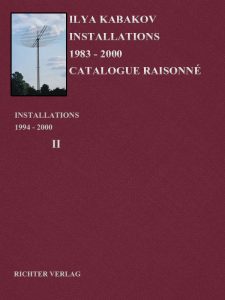The Painting as Assignation
YEAR: 1998
CATALOG NUMBER: 149
PROVENANCE
Collection of the artist
EXHIBITIONS
Düsseldorf, Kunsthalle Düsseldorf
Das Fünfte Element. Geld Oder Kunst, 28 Jan 2000 — 28 May 2000
DESCRIPTION
The installation represents a crowded ‘office’ (6 x 3.5 meters) that has a door leading into it as though it were a closet. There are narrow display cases running along the walls of the entire perimeter, and there are sheets of green paper behind plexiglass hanging on the walls: 30 sheets that are 95 x 65 cm, and 20 sheets that are 70 x 50 cm. Each sheet contains a collage of various things arranged in no particular order and with no hierarchy whatsoever: receipts, notes, telephone numbers, sketches, and finished drawings of sketches — everything that would ordinarily comprise the paper ‘archive’ of an artist. Obviously, there are more items on the larger sheets of paper, and fewer items on the smaller ones. The same kinds of items are arranged in the display cases, but here each piece of paper is separate. There is a board in the middle of one of the long walls with a printed text explaining the idea behind the exposition.
CONCEPT OF THE INSTALLATION
The installation is intended to address the theme of the exhibit ‘Das fünfte Element’ dedicated to the history of money, beginning with ancient times and extending through today. A problem that has remained topical and urgent for all times serves as the theme of this installation: the interrelationship between art and money. This theme is particularly interesting and paradoxical now, given the situation of post-modernism. It is paradoxical today because of a shift in what is considered worthy of purchase. In earlier times (I have in mind both ancient times and the quite recent past), a work of art that deserved to be purchased was understood to be one that was executed well and was of very high quality, the kind of thing that sharply contrasted with everyday items such as preparatory sketches, all kinds of scraps, unsuccessful attempts to create something, leftover materials that used to be destroyed, or in the best case, were removed and put in an archive. In this new, post-modern art world, however, these discarded ‘leftovers’ that once were considered junk are more often and more permanently coming to occupy places in both museums and private collections.
Considering the way the contemporary market for such objects functions, this installation explores the problem not of the value of one, very high-quality piece of work, but the creation by the artist of his own system of ‘currency’ connected with the issuing of his own personal monetary denominations (assignats), where each individual work is only a ‘nominal symbol’ of such currency (like the dollar denomination) and where it is not the originality and uniqueness of each work that serves to distinguish the value of one denomination from another, but rather this distinction is made only by the very size of the ‘banknotes.’
Images
Literature



